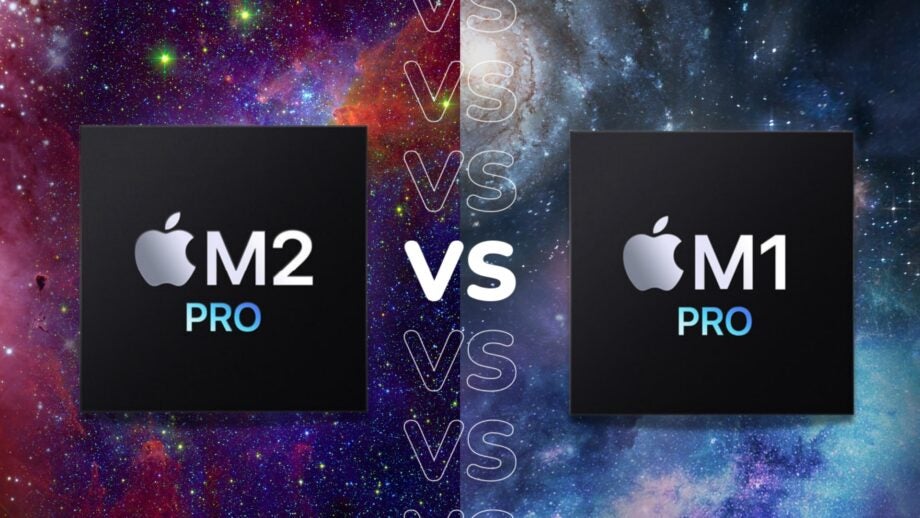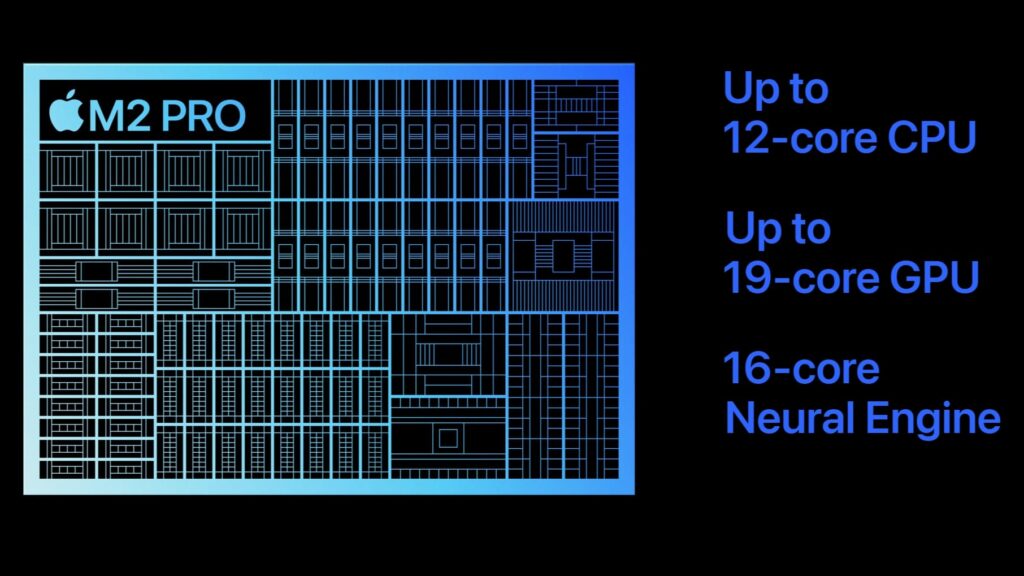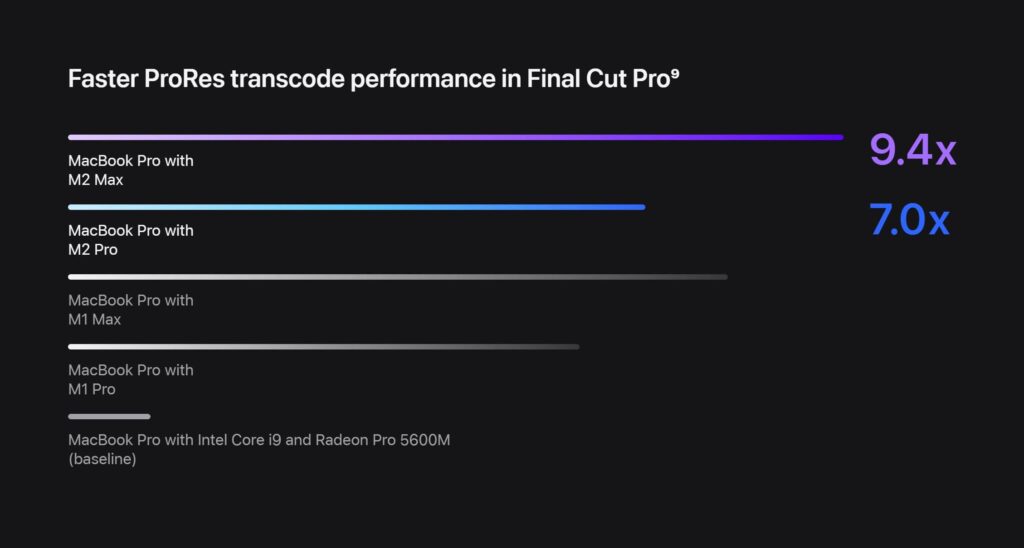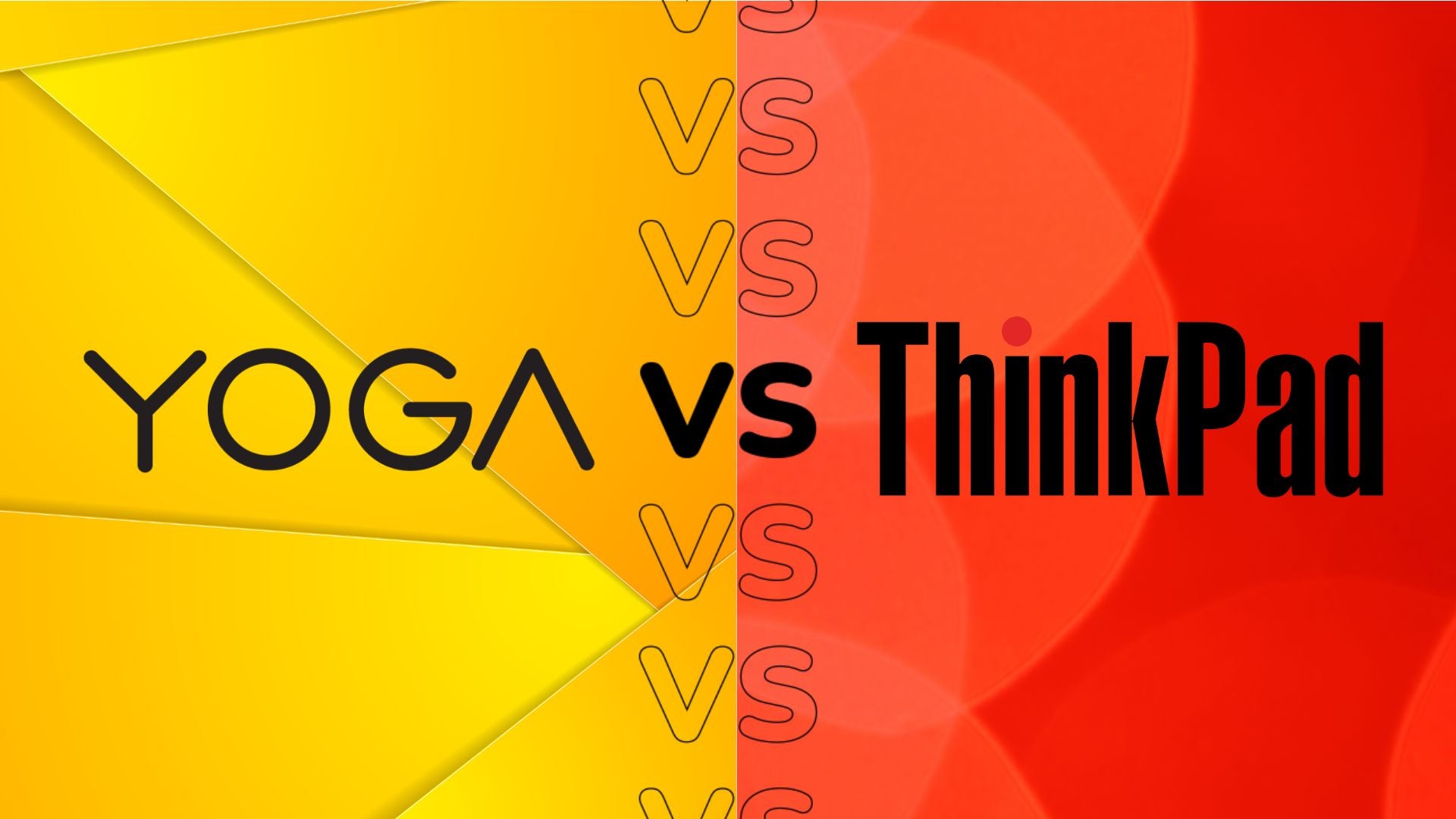Apple M2 Pro vs M1 Pro: Is newer better?

Apple surprised everyone with the announcement of a new MacBook Pro M2 (2023) and its two new chips, the M2 Pro and the M2 Max.
The latest MacBook Pro M2 (2023) comes with two new chips: the M2 Pro and the M2 Max. Out of these two chipsets, the M2 Max is far and away the most powerful, boasting a higher GPU count than its new sibling. If you want to see how these chips compare in more detail, make sure you take a look at our Apple M2 Pro vs M2 Max piece.
But for anyone that already owns an Apple Silicon-powered Mac, how does the M2 Pro compare against 2021’s M1 Pro chipset? We’re going to be running through all of the key differences between this hardware so you can decide if the latest chip is worth the upgrade.
M2 Pro has a higher GPU count
The M1 Pro comes with an impressive 16-core GPU, which is 1.7x faster at rendering 8K videos than AMD’s Radeon Pro 5600M GPU, according to Apple. These statistics don’t seem as impressive when compared to the latest M2 Pro, which can be configured with up to 19 cores.
More cores in a GPU means that more data can be processed at a time, which results in faster speeds overall while engaging in intensive creative tasks. Apple claims that the 19-core GPU results in a huge boost in graphical performance, making the M2 Pro the best option if you’re hoping to edit 4K videos or render 3D effects.
M2 Pro also has a higher CPU count
In the same vein as the GPU count, the latest M2 chips have also improved the number of CPU cores when compared to their predecessors. The M1 Pro can be configured with up to a 10-core CPU, while the M2 Pro reaches new heights with a 12-core CPU.

Apple claims that the M2 Pro is up to 20% faster than the CPU found in the M1 Pro, which should result in improved performance overall during day-to-day tasks as well as intensive creative workloads. The higher core count means that the PC will be able to run multiple processes at the same time without a lot of strain, making the M2 Pro the best option for those looking for raw performance power.
M1 Pro has fewer transistors
The M1 Pro comes with 33.7 billion transistors, while the M2 Pro now packs an incredible 40 billion transistors, which is almost 20% more than the M1 alternative and double the amount found in the original M2 chip.
More transistors are definitely a good thing, as more tasks can be completed at once rather than one at a time. This results in faster processing speeds overall and should make large workloads feel more streamlined.
M2 Pro is better equipped for creative tasks
While Apple has not released any specific statistics as of yet, it has given us some idea of how well the M2 Pro chip performs over the M1 Pro. The company has claimed that apps like Adobe Photoshop run heavy workloads faster than ever and shared a graph that shows the M2 Pro is 7x times faster than the baseline MacBook Pro with an Intel Core i9 processor and Radeon Pro 5600M GPU.

As you can see from the graph above, the M2 Pro is worlds faster than the M1 Pro when it comes to video transcoding, but it also beats out its predecessor in video editing, image upscaling and photo editing, to name a few.
This puts the M2 Pro head and shoulders above the M1 Pro when it comes to performance power, making it the better option out of the two.








